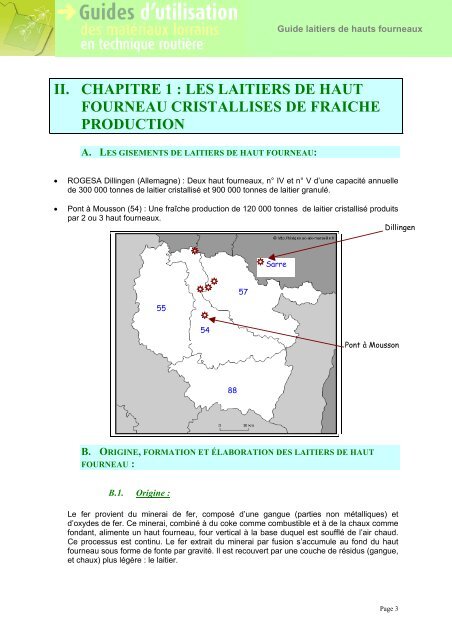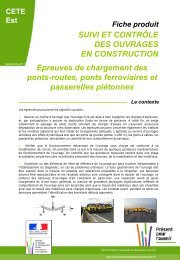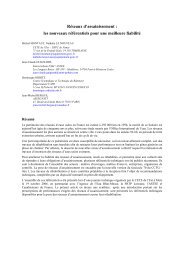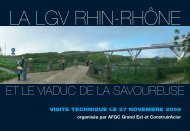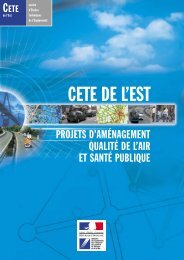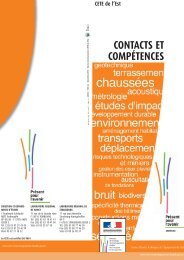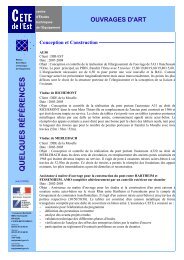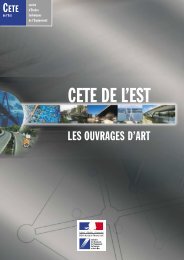Guide laitiers hauts fourneaux - Le CETE de l'Est
Guide laitiers hauts fourneaux - Le CETE de l'Est
Guide laitiers hauts fourneaux - Le CETE de l'Est
- No tags were found...
Create successful ePaper yourself
Turn your PDF publications into a flip-book with our unique Google optimized e-Paper software.
<strong>Gui<strong>de</strong></strong> <strong>laitiers</strong> <strong>de</strong> <strong>hauts</strong> <strong>fourneaux</strong>II. CHAPITRE 1 : LES LAITIERS DE HAUTFOURNEAU CRISTALLISES DE FRAICHEPRODUCTIONA. LES GISEMENTS DE LAITIERS DE HAUT FOURNEAU:• ROGESA Dillingen (Allemagne) : Deux haut <strong>fourneaux</strong>, n° IV et n° V d’une capacité annuelle<strong>de</strong> 300 000 tonnes <strong>de</strong> laitier cristallisé et 900 000 tonnes <strong>de</strong> laitier granulé.• Pont à Mousson (54) : Une fraîche production <strong>de</strong> 120 000 tonnes <strong>de</strong> laitier cristallisé produitspar 2 ou 3 haut <strong>fourneaux</strong>.DillingenSarre555754Pont à Mousson88B. ORIGINE, FORMATION ET ÉLABORATION DES LAITIERS DE HAUTFOURNEAU :B.1. Origine :<strong>Le</strong> fer provient du minerai <strong>de</strong> fer, composé d’une gangue (parties non métalliques) etd’oxy<strong>de</strong>s <strong>de</strong> fer. Ce minerai, combiné à du coke comme combustible et à <strong>de</strong> la chaux commefondant, alimente un haut fourneau, four vertical à la base duquel est soufflé <strong>de</strong> l’air chaud.Ce processus est continu. <strong>Le</strong> fer extrait du minerai par fusion s’accumule au fond du hautfourneau sous forme <strong>de</strong> fonte par gravité. Il est recouvert par une couche <strong>de</strong> résidus (gangue,et chaux) plus légère : le laitier.Page 3


